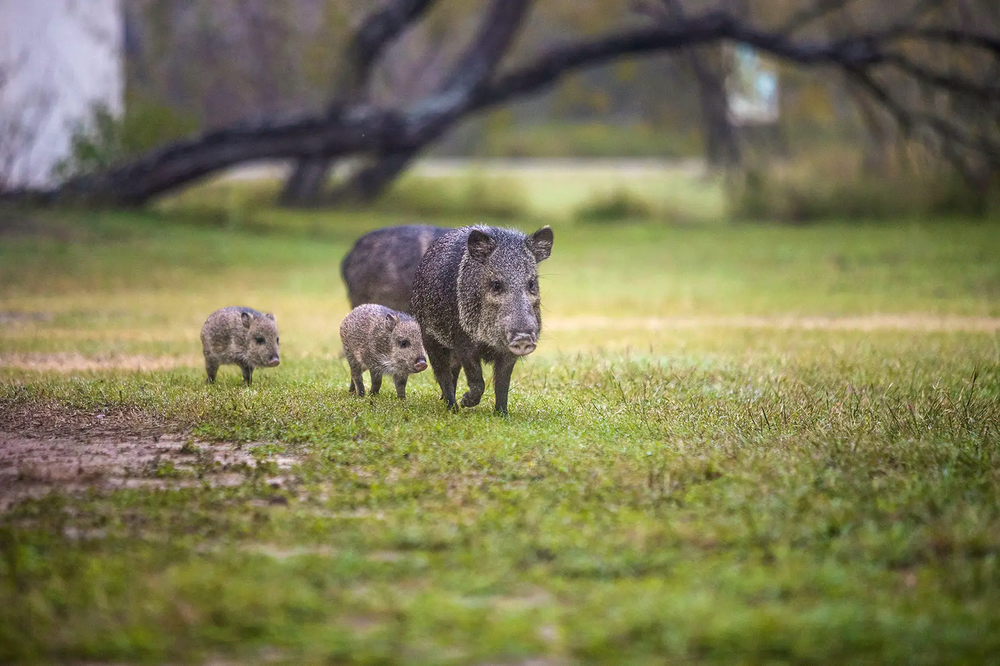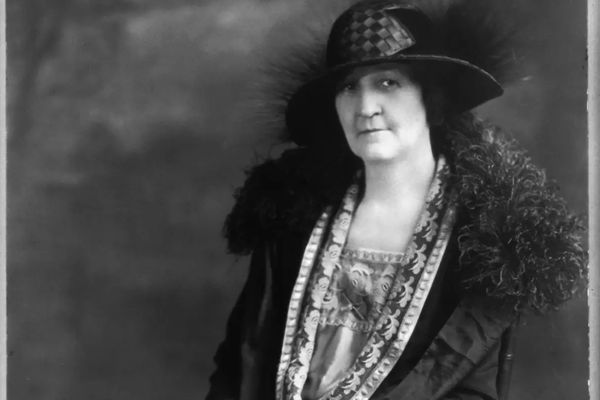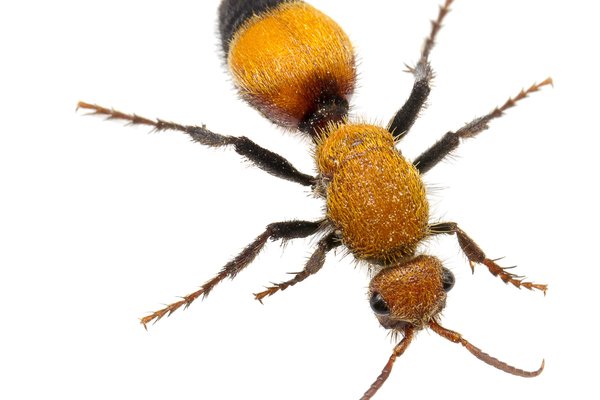It was a surprise meeting between two very different families. We were spending a week at a South Texas dude ranch, enjoying daily trail rides and evenings in the comfortable, rustic lodge. Our room had a large sliding glass door facing out on arid scrubland, with small oak trees littering the nearby ground with brown acorns.
Waking up a bit earlier than usual one morning, I pulled back the drapes and came face to face with a family of collared peccaries, commonly called javelinas, rooting about outside our door. There were eight of them, including two small reddish-brown infants.
They were intent on gorging themselves on acorns and ignored us completely. Given the javelina’s poor eyesight, they may not have seen us, although they have a very keen sense of smell, and likely knew we were there.But they nonchalantly went on with their breakfast.
Each of the adults was nearly 2 feet tall at the shoulder, lean but firmly built, weighing about 50 pounds. Other than the babies, they were uniformly dark brownish black in color, with a whitish collar. Their snouts were decidedly pig-like, and they had slim legs ending in hooved feet. Javelinas may look like pigs, but they are not — peccaries and pigs diverged around 40 million years ago and might at best be considered distant cousins. There are three species of peccary found in the Americas, with the collared peccary being the one that inhabits our southern states — Texas, Arizona and New Mexico in particular.
They prefer prickly pear cactus, but will eat a variety of vegetation, which, as we learned, includes acorns. Herd animals, they band together in family groups, using a chemical scent they exude from a gland at their rump to mark territory and themselves so that they can recognize members. Most of the time you may smell a javelina before you see it — the scent, which may be useful and pleasant to peccaries, is unpleasant to many people.
Javelina herds are protected by a dominant male, who marks territory and fends off other males intent on stealing away his females. With razor-sharp teeth and canine tusks, the males will do battle, but despite the show of aggression, there are rarely any fatalities. They are not aggressive toward people unless cornered or provoked; in the early 20th century they were hunted for their hides, the thick leather and fur making for tough and warm gloves. This severely depleted their numbers, but the population has since stabilized in Texas due to successful management as a game animal, limiting the number of animals that may be taken to two per hunter over a year.
Javelinas are smelly, that’s true, and at times can become a nuisance, but above all, they are interesting Texas wildlife.









